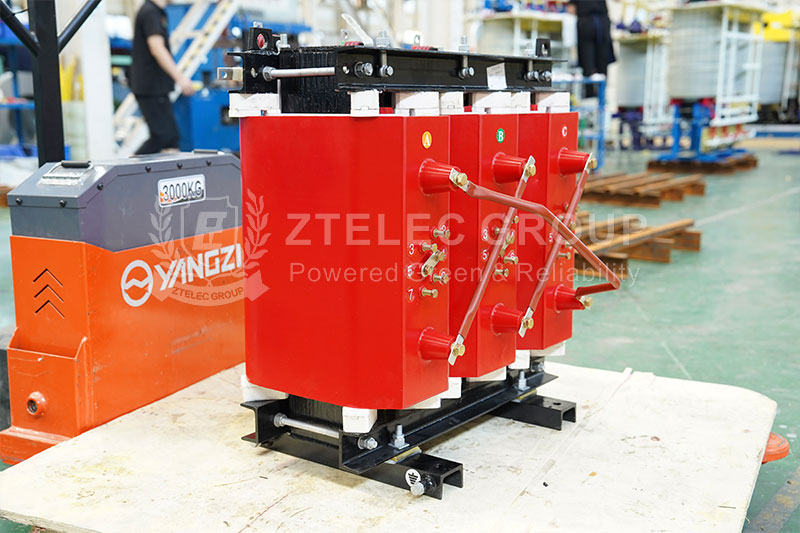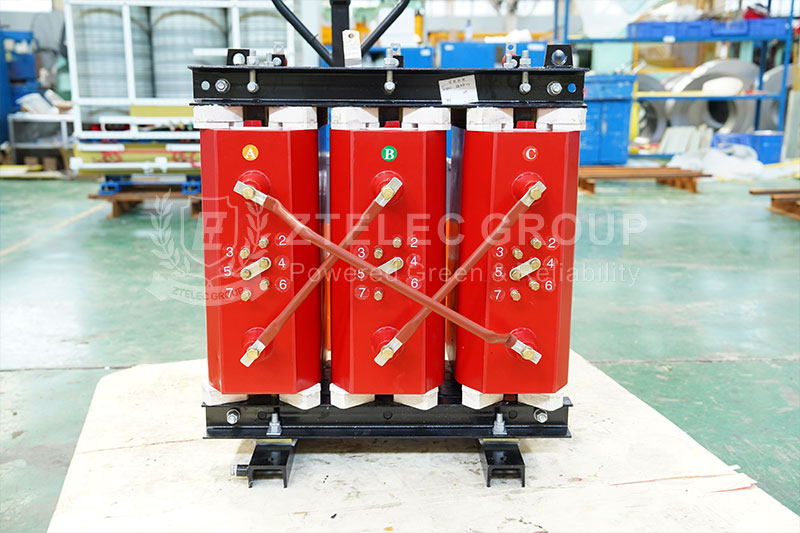What is a Dry-Type Cast Resin Transformer?
The dry-type cast resin transformer is an important device widely used in power systems. With its unique structural characteristics and superior performance, it plays an indispensable role in modern power regulation and energy transmission. This paper will systematically explore the working principles, design features, application fields of dry-type cast resin transformers, and their advantages over traditional transformers.
I. Working Principles of 
The primary function of a dry-type cast resin transformer is to convert high voltage into low voltage to meet the requirements of various power equipment. It mainly consists of a core, windings, and a cast resin enclosure. The core of the transformer is typically made of silicon steel laminations to reduce energy loss, while the windings use copper or aluminum conductors, which have good conductivity. The cast resin enclosure not only provides insulation but also features moisture resistance, dustproofing, and corrosion resistance, allowing the transformer to operate safely and stably in various harsh environments.
When alternating current passes through the windings, it generates a varying magnetic field, inducing an electromotive force in the core and producing the required lower voltage at the output. The cast resin plays a dual role in both insulation and heat dissipation, effectively lowering the temperature and enhancing the load capacity of the transformer.

II. Design Features
The design of dry-type cast resin transformers is based on three core principles: safety, environmental friendliness, and high efficiency.
Safety: Dry-type transformers use cast resin as insulation material, which is non-flammable and does not pose safety hazards such as oil explosions, making it particularly suitable for fire-sensitive environments like commercial buildings and underground projects.
Environmental Friendliness: Because they do not use oil as a cooling medium, dry-type cast resin transformers do not cause environmental pollution during operation, aligning with modern environmental protection requirements. Additionally, the cast resin material is recyclable, reducing resource waste.
High Efficiency: Dry-type transformers have a high cooling efficiency, enabling stable operation under higher load conditions with low energy consumption and high energy conversion efficiency. Moreover, the cast resin structure provides good heat dissipation, contributing to the overall performance of the transformer.
III. Application Fields
Dry-type cast resin transformers are widely used in various fields due to their unique performance:
Urban Power Grids: In urban power supply systems, due to space constraints and high safety requirements, dry-type cast resin transformers are often the preferred choice for distribution transformers, ensuring the stability and reliability of urban power supply.
Industrial Plants: More and more industrial enterprises consider safety and operational efficiency when constructing new plants, opting for dry-type cast resin transformers as power conversion devices to ensure stable electricity supply during production processes.
Renewable Energy: With the development of renewable energy technologies, dry-type cast resin transformers are also used in wind and solar power generation systems, effectively facilitating energy conversion and transmission.

IV. Advantages Over Traditional Transformers
Dry-type cast resin transformers have distinct advantages compared to traditional oil-immersed transformers:
Low Maintenance Costs: Since cast resin transformers do not use oil, there is no need for regular oil replacement and quality testing during operation, significantly reducing maintenance costs and labor input.
Convenient Installation: Dry-type transformers are relatively lightweight and can be flexibly arranged, helping to save installation space. Additionally, their operation in indoor environments reduces adaptability requirements for external conditions.
High Reliability: The fully enclosed structure of dry-type cast resin transformers allows them to maintain high efficiency without failure in the face of harsh environments, such as humidity and dust, resulting in a longer service life.
dry-type cast resin transformers, with their excellent design, wide applications, and numerous advantages, are gradually becoming an important component of modern power systems. In the future, as technology continues to develop and attention to power safety, reliability, and environmental protection increases, dry-type cast resin transformers will play an even more significant role in the power industry. Understanding and mastering the characteristics of this equipment will lay the foundation for the efficient, green, and sustainable development of power systems.
- more+releated article
- 2025-12-13G10 and FR4 Epoxy Boards: Commonly Used for Ge
- 2025-12-13Comparison of Heat-Resistant DDP Insulating Pa
- 2025-12-12Price of a 1600kVA 10kV Cast Resin Dry-Type Tr
- 2025-12-12How to Choose Epoxy Laminate Materials for Gen
- 2025-12-11Protection Configuration Principles for 35kV D
- 2025-12-11The Price of Heat-Resistant DDP Insulation Pap
- 2025-12-10Application Prospects of 10kV/35kV Oil-Immerse
- 2025-12-09How to Reduce the Maintenance Cost of Oil-Imme
- 2025-12-09How to Choose the Best 110 kV Oil-Immersed Pow
- 2025-12-08Heat-Resistant DDP Insulation Paper





